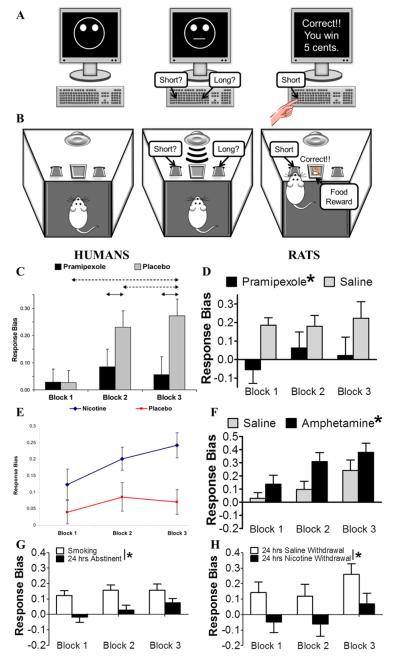Figure 2.
Schematics of human (A) and rat (B) versions of the Response Bias Probabilistic Reward Task used to assess reward learning. The dopamine D2/D3 receptor agonist pramipexole blunted response bias in humans (C) and rats (D). The psychostimulants nicotine and amphetamine increased response bias in humans (E) and rats (F), respectively. Withdrawal from chronic nicotine exposure blunted response bias in humans (G) and rats (H). Altogether, these data suggest a high level of concordance between the human and rat versions of this reward learning task. (Figures were reproduced with permissions from Barr et al, 2008; Der-Avakian et al, 2013; Pergadia et al, 2014; Pizzagalli et al, 2008a)

